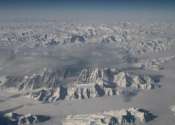Q&A: Designing a better local tsunami warning system
On a Friday afternoon in the spring of 2011, the Tōhoku-Oki earthquake shook northeastern Japan for six minutes and shifted the country's main island by 8 feet. Minutes later, residents began receiving tsunami warnings through ...







